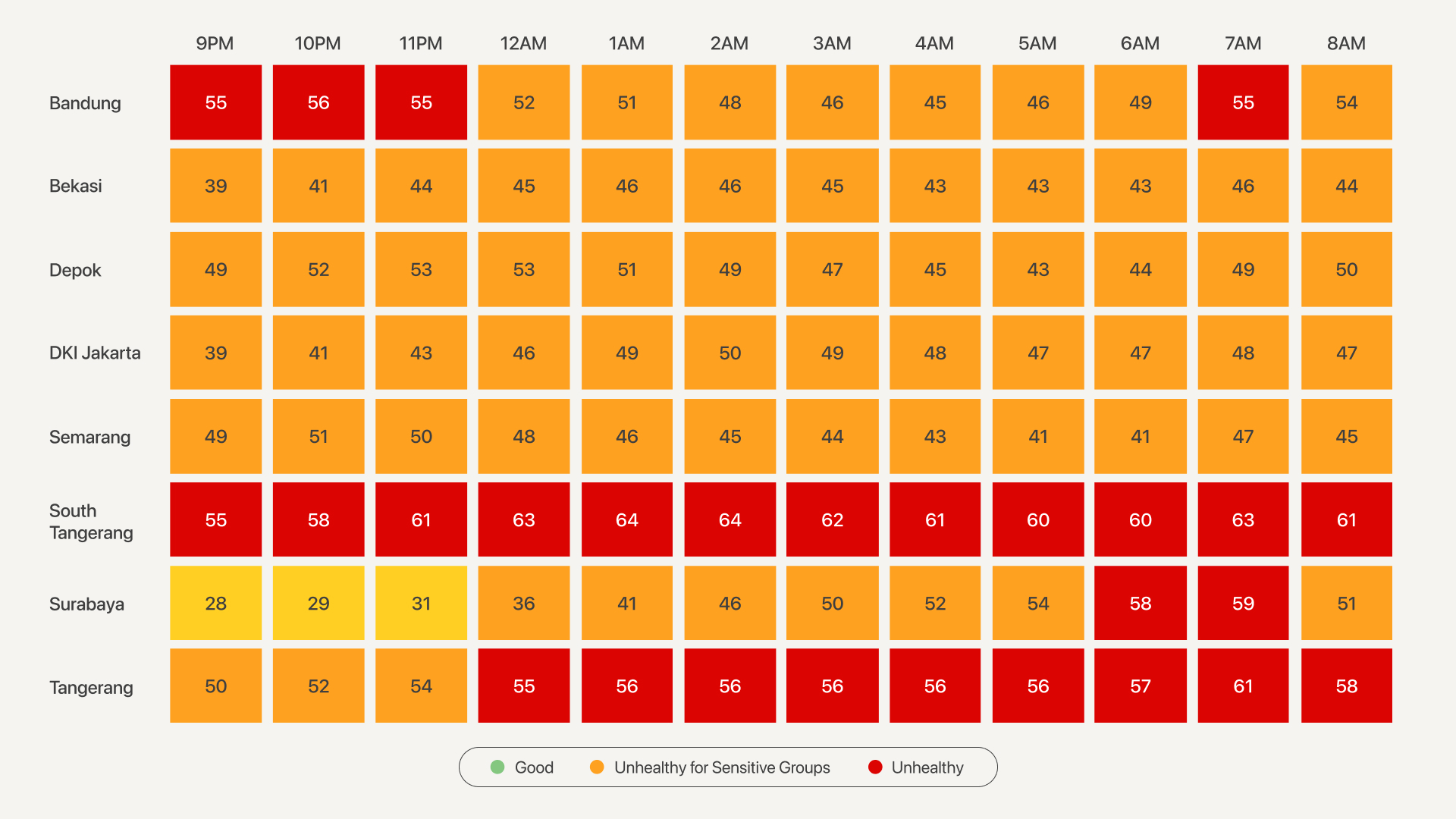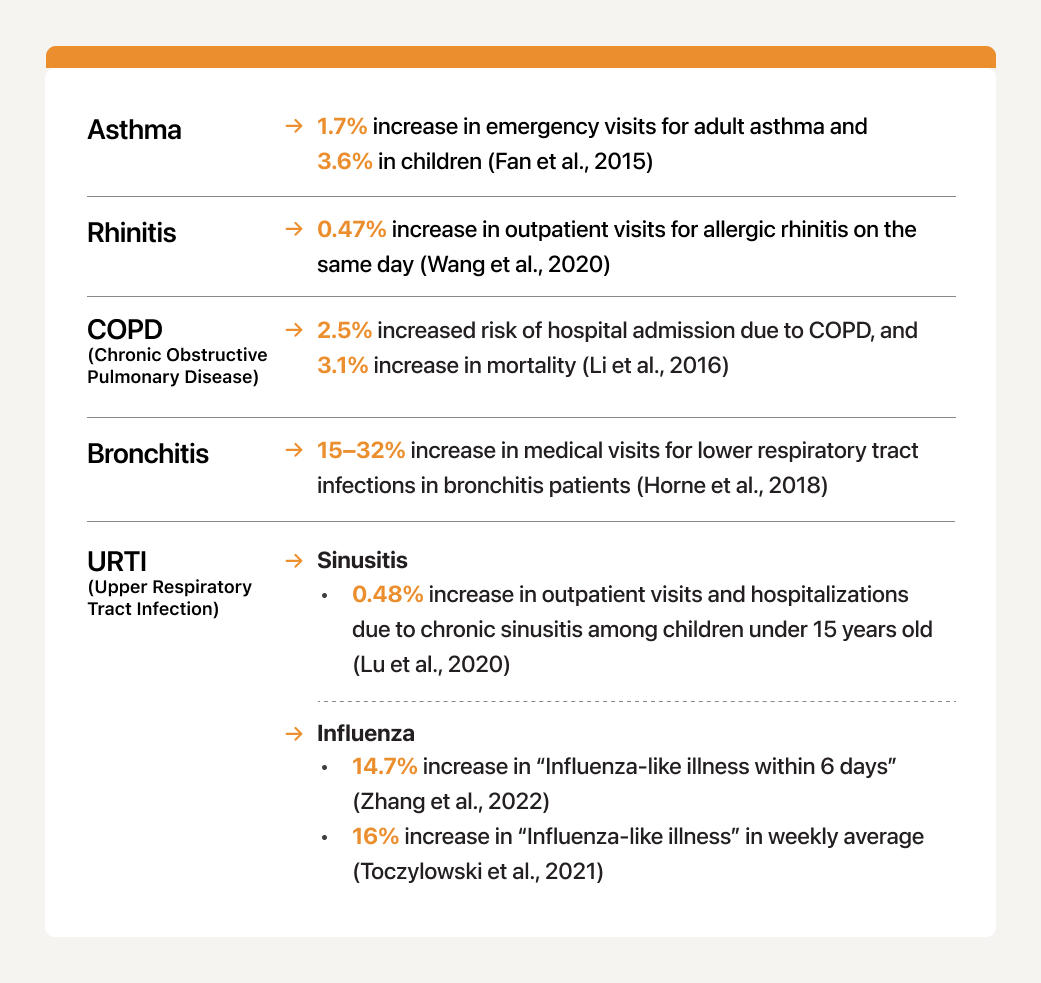Air Pollution in the Dry Season: A Threat to Health, Especially for Vulnerable Groups
Indonesia faces significant challenges regarding air quality, with air pollution posing a substantial risk to public health. As the months are passing by, Indonesia is now encountering the dry season starting from May 2025. The historical data shows that in the dry season, the air pollution is spiking to high levels, multiple times worse than in the rainy season.
The silent killer as we fall asleep
The data from Nafas’ air monitoring network indicate that high pollution levels often occur at night. As most of us fall asleep, we’re unaware to know that the air quality outdoors reaches to unhealthy level. This not only happens in the Jabodetabek area, but also in other areas such as Bandung, Semarang, and Surabaya.

(Air pollution from June to July 2025)
The Health Toll: A Clear Link to Respiratory Illnesses
Air pollution has a direct and alarming impact on health, particularly increasing the risk of respiratory illnesses. Some of the research sets the short-term risk from air pollution has various effects on our health. Each 10ug/m3 increase in PM2.5 is associated with increased risk of respiratory disease as follows:

While air pollution affects everyone, certain groups are especially vulnerable, such as infants, children, pregnant women, the elderly, and individuals with congenital conditions related to air pollution. Many people have expressed concern about the impact on children, often noting that “many children suffer from ISPA (Acute Respiratory Infections)” as a result of poor air quality, highlighting that we are “still not free from air pollution.”
A white paper jointly developed by Nafas, the DBS Foundation, and the University of Indonesia titled "Air Pollution and Pneumonia in Jakarta" emphasizes the link between air pollution and pneumonia. It reveals that one in twenty children under the age of five is affected by pneumonia, with air pollution being one of the contributing factors. Another white paper, a collaboration between Nafas and Halodoc, shows that air pollution may lead to a 34% increase in respiratory illness diagnoses. These heightened health risks are an ongoing public concern, especially during the dry season when pollution levels rise, prompting questions like, “Are citizens healthy?”
What should we do in this condition?
Air pollution fluctuates over time. Here are some recommended actions during periods of high pollution:
- Regularly Check Air Quality: Utilize air quality monitoring applications to inform the surrounding air pollution.
- Wear a Mask: When outdoors, consider wearing a respirator mask, such as an N95, to filter out particulate matter.
- Shift Activities Indoors: The indoor activity would be less worried by the bad air pollutants because these days, many places are managed and monitored with Clean Air Zone powered by Nafas. This is not just air purification—it’s a full ecosystem that makes indoor spaces truly safe and healthy to breathe in.